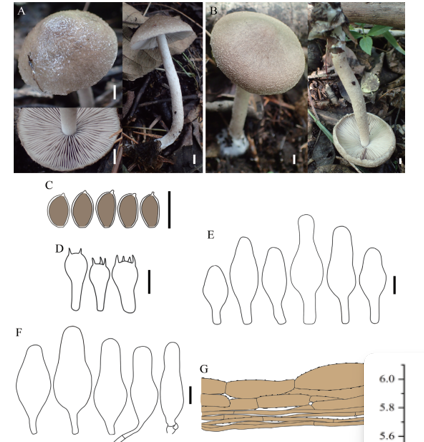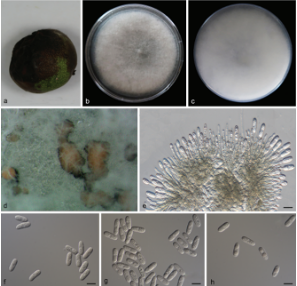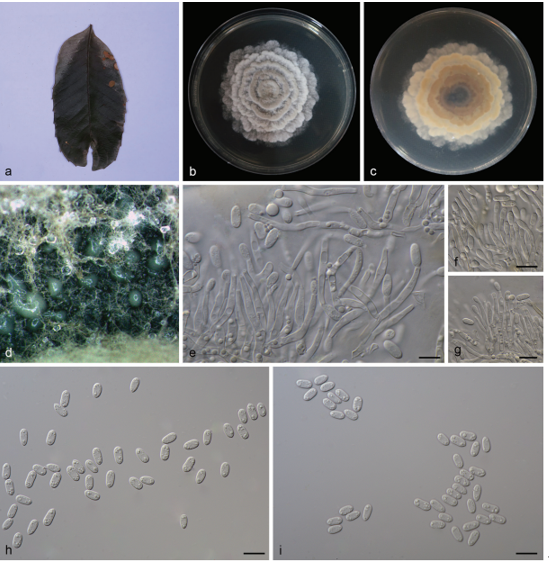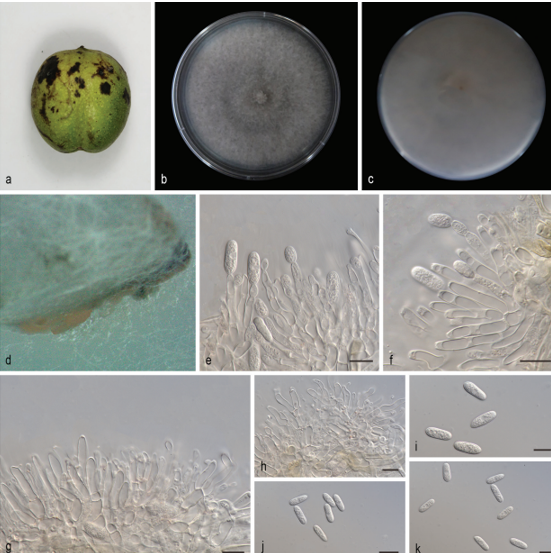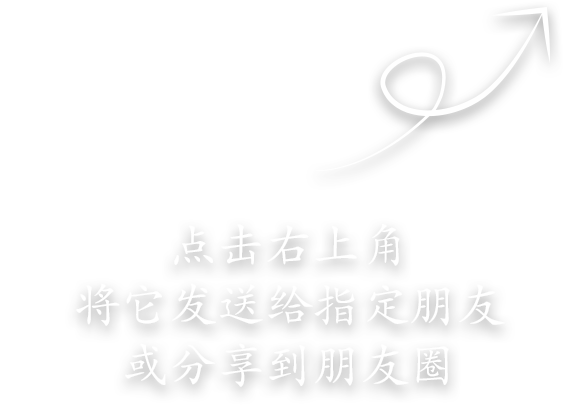Russula subpectinatoides G.J. Li & Q.B. Sun, sp. nov.2021
Fungal Names: FN 570759
Holotype: China, Jiangsu Province, Nanjing City, Qixia District, Nanjing Nor mal University, 32°06'N, 118°54'E, alt. 84 m, on the ground in coniferous forest, 28 August 2018, Q.B. Sun 2018001 (HBAU15030, Holotype). GenBank accession: MW1041163 (ITS).
Morphological description
Sexual morph: Basidiomata small to medium-sized. Pileus 18–95 mm in diam., initially hemispherical, concave at centre, turning applanate with age, often depressed at stipe, slightly viscous when young or humid, greyish-brown to brownish-yellow tinged, intermixed with dark brown fringe, Buffy Citrine (XVI19′k) to Light Brown ish Olive (XXX19′′k) at centre, Citrine-Drab (XL19′′′i), Drab (XLVI17′′′′) to Benzo Brown (XLVI13′′′′i) when mature, often turning Buffy Olive (XXX21′′k) to Saccardo’s Olive (XVI19′m) when old and dry; margin acute to subacute, involute when young, straight with maturity, sometimes dehiscent, undulate to curled-up when old, striate 1/4–1/3 towards the centre, not or rarely weakly tuberculate, peeling 1/5–1/3 towards the centre, rarely flaking in small patches, with an ochre tinge of Old Gold (XVI19′i), Olive Ochre (XXX21′′) to Tawny-Olive (XXIX17′′i). Lamellae adnate to subadnate, 3–6 mm in height at the midpoint, sometimes forked near the stipe and the pileus edge, interveined, white to pale cream, White (LIII) when young, Light Buff (XV17′f) to Cream Colour (XVI19′f) with age, rarely stained reddish-brown tinge of Buckthorn Brown (XV17′i) when bruised, taste slightly to moderately acrid; edge even, constrict ed towards the margin, 9–19 pieces per cm at the edge; lamellulae infrequent. Stipe central to subcentral, 2.4–9.3 × 1.3–2.7 cm, slightly narrowing towards the base and apex, smooth at first, longitudinally slightly rugulose when mature, White (LIII) first, sometimes faintly stained with Honey Yellow (XXX19′′) to Olive Ochre (XXX21′′) when bruised, stuffed first, fistulous to hollow when old. Context 2–5 mm thick above the stipe, initially White (LIII), unchanging or slowly turning pale ochre tinge of Cin namon Buff (XXIX15′′d) when bruised, pale greyish-yellow tinge of Cartridge Buff (XXX19′′f) at base when old, taste slightly to moderately acrid, with no distinct odour. Spore print cream coloured (Romagnesi IIc–IId).
Basidiospores [250/10/5] (5.3–) 5.6–7 (–7.3) × (4.1–) 4.6–6 (–6.3) μm, Q = (1.02 ) 1.05–1.31 (–1.37) (Q = 1.19 ± 0.09), 6.3 × 5.2 μm in average, mostly subglobose to broadly ellipsoid, rarely globose and ellipsoid, ornamentation amyloid, composed of long ridges forming an incomplete to complete reticulum, rarely intermixed with an isolated conical to verrucous warts and short crests, 0.3–0.5 μm in height; suprahilar spot inamyloid and indistinct. Basidia 27–50 × 8–12 μm, hyaline in KOH, subcylin drical to subclavate, rarely clavate or subfusiform, inflated towards the upper end or mid-piece, 4-spored, projecting 15–30 μm beyond hymenium; sterigmata 3–6 μm, slightly tortuous, sometimes straight. Hymenial cystidia sparsely distributed, fewer than 200/mm2, 56–73 × 6–12 μm, fusiform to subclavate, projecting 20–40 μm beyond the hymenium, contents granular, sparsely distributed, slightly greyish in SV; apex suba cute, rarely obtuse; lamellar edge sterile. Pileipellis two layered, composed of suprapellis (80–140 μm thick) and subpellis (100–150 μm thick). Suprapellis an ixotrichoderm, composed of gelatinised, ascending to vertical, septate hyphae, acid-resistant encrusta tions absent, terminal cells mostly lanceolate to bayonet-shaped at pileus centre, most ly tapered at apex, rarely cylindrical, 20–30 × 4–7 μm, subapical cells sometimes in f lated, barrel-shaped, ellipsoid or almost subglobose to globose; when compared with suprapellis at pileus centre, its margin is also an ixotrichoderm, but contains more repent elements, 3–5 μm in width, inflated hyphal cells not observed, lateral short ramifications frequent; pileocystidia long, cylindrical, non-septate, 3–5 μm in width, apex mucronate, contents granulate, sparse, pale grey in SV. Subpellis a composed of cylindrical, sometimes inflated, septate, loosely intricate, gelatinous, hyaline hyphae 3–6 μm in width. Clamp connections absent in all parts.
Asexual morph: Undetermined
Culture characteristics:
Habitat: Single to scattered on yellow brown soil in conifer ous forest of subtropical monsoon climate zone dominated by Cedrus deodara, Pinus parviflora and P. thunbergii.
Distribution: China (Jiangsu).
GenBank Accession:
MW041163
MW041164
MW041165
MW041166
Notes: This new species is similar to R. pseudopectinatoides in its brownish-yellow pileus, slightly acrid taste, cream spore print, spores with low, subreticulate ornamenta tion and gelatinous pileipellis. It is notable that basidiomata of R. subpectinatoides were collected from a forest of introduced coniferous tree species. Cedrus deodara is native in the western Himalayas, while Pinus parviflora and P. thunbergii are naturally distributed in the Japanese archipelago and Korean peninsula. Therefore, this new taxon may also occur in these introduced areas with its accompanying trees.
T he Asian species of sect. Ingratae already recognizable by their long slender stipe, such as R. gelatinosa, R. guangdongensis, R. punctipes, R. senecis, R. subpunctipes and R. tsokae and cannot be confused with our new species, even more so because they have basidiospores composed of long wings, 2 μm high or more (Song et al. 2018, 2020). A similarly-winged spore ornamentation also differentiates species of the R. grata lineage which, moreover, usually have a distinct bitter almond smell. The more golden yellow pileus of species in the R. foetens or R. subfoetens lineages also avoids confusion with our new species and because many of these are distinctly very acrid. The strong yellowish stipe base that turns immediately red with KOH easily allows one to distinguish the few species of the R. insignis lineage. In the R. granulata lineage, the Asian species R. rufoba salis has reddish tinged stipe base, pleurocystidia with mucronate or appendiculate apices and longer terminal cells, up to 60 μm (Song et al. 2018). Finally, the typically very acrid taste allows us to eliminate most species of the R. amoenolens lineage, notwithstanding their sometimes quite similar colouration. The same very acrid taste also differentiates R. obscuricolor, which was described from the Indian Himalayas (Das et al. 2017) and showed close affinity to some Southern Hemisphere Ingratae in our phylogeny.
After application of these criteria, we are principally left with the phylogenetically closer species of the R. praetervisa lineage as potential sources of confusion, most of which are mild to merely slightly acrid. From Asia, this concerns essentially R. pseudo pectinatoides, a species that can be distinguished by its larger basidiospores (6–) 6.5–9 (–9.5) × 5–7.5 (–8) μm, hymenial cystidia sometimes with moniliform or capitate appendages and terminal cells of pileipellis with obtuse to ventricose apices (Li et al. 2015b); R. ahmadii differs in small basidiomata with pileus 1–4.5 cm in diam. and pileipellis a cutis with bifurcated terminal cells (Jabeen et al. 2017). The European spe cies R. recondita Melera & Ostellari has a fruity-acidic, but overall unpleasant context smell, larger basidiospores 7–8.5 × 5.5–7 μm, with ornamentation composed of mostly isolated obtuse conical warts up to 1 μm high (Melera et al. 2017). From North Amer ica, R. amerorecondita Avis & Barajas has a strongly tuberculate-striate pileus margin, white to pale cream spore print, larger basidiospores (6.5–) 7.1–7.6–8.1 (–9.5) × (5–) 5.6–6.3–6.9 (–8) μm with more isolated ornamentation and a habitat in hardwood forest dominated by Quercus; R. garyensis Avis & Barajas has context with unpleas ant, bleachy, fishy to parmesan smell, higher basidiospore ornamentation (0.6–) 0.8–1 (–1.4) μm, longer hymenial cystidia (62–) 71.5–81.4–91 (–103) × 7–8.1–9 (–10) μm and apex sometimes with two, long, usually narrow appendages (Adamčík et al. 2019).
Reference: Li, G. J., Li, S. M., Buyck, B., Zhao, S. Y., **e, X. J., Shi, L. Y., ... & Li, M. (2021). Three new Russula species in sect. Ingratae (Russulales, Basidiomycota) from southern China. MycoKeys, 84, 103.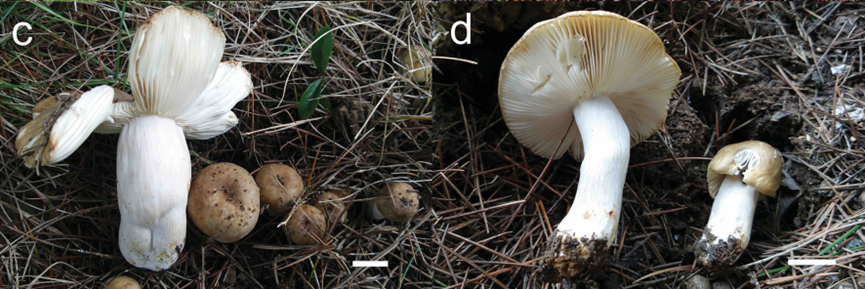
Figure 2. Basidiomata C–D Russula subpectinatoides. Bars: 10 mm. 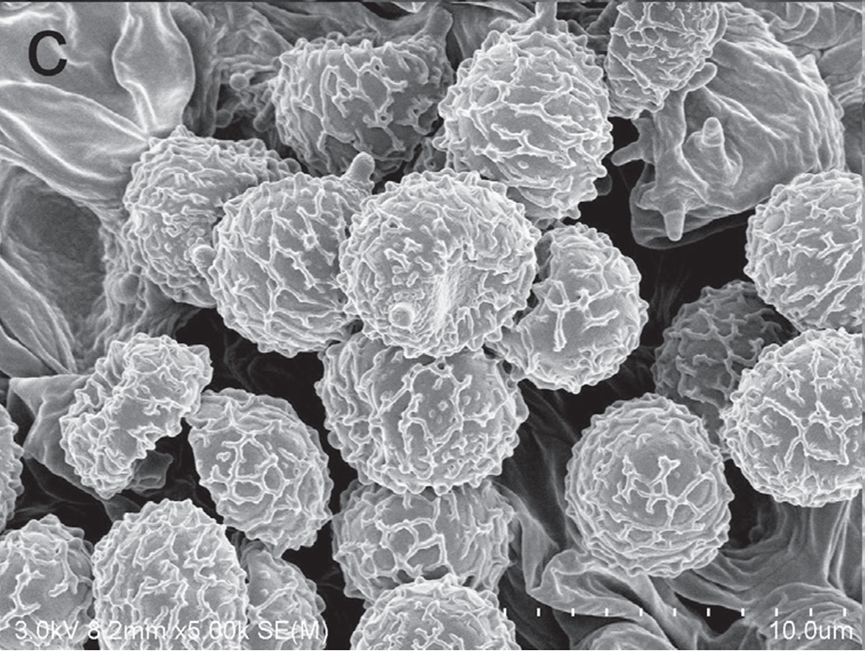
Figure 3. SEM photo of basidiospores C Russula subpectinatoides 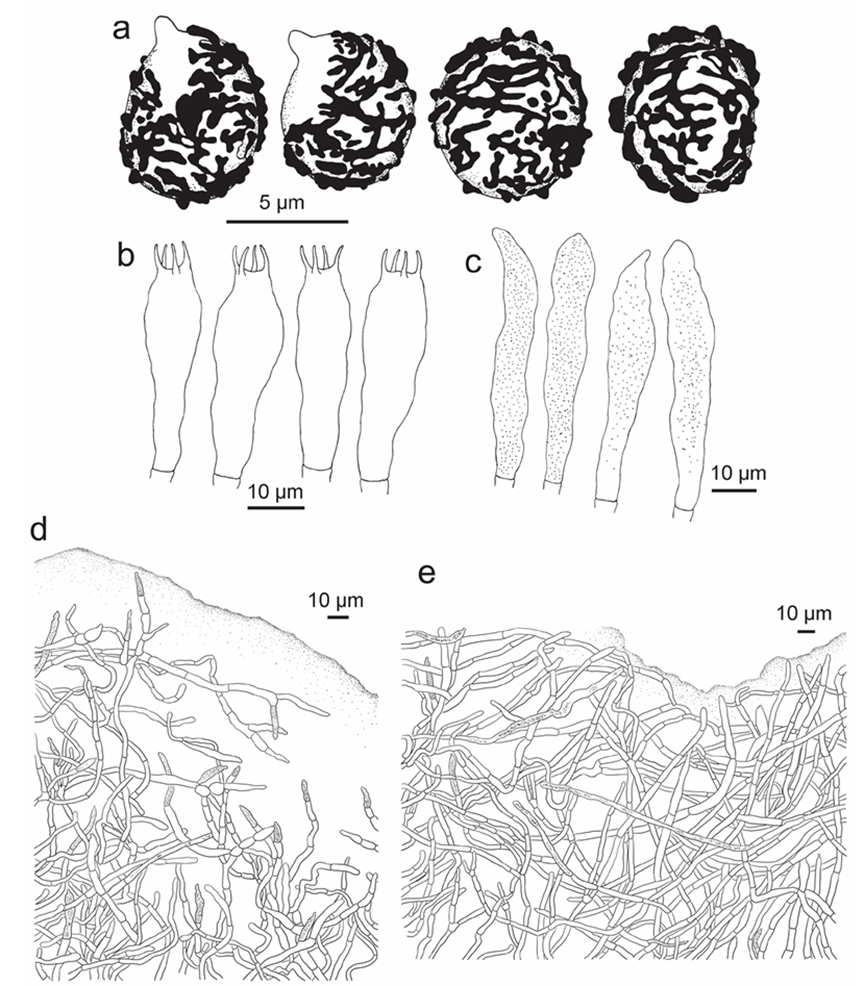
Figure 8. Russula subpectinatoides, holotype A basidiospores B basidia C hymenial cystidia D suprapellis in pileus centre E suprapellis in pileus margin. 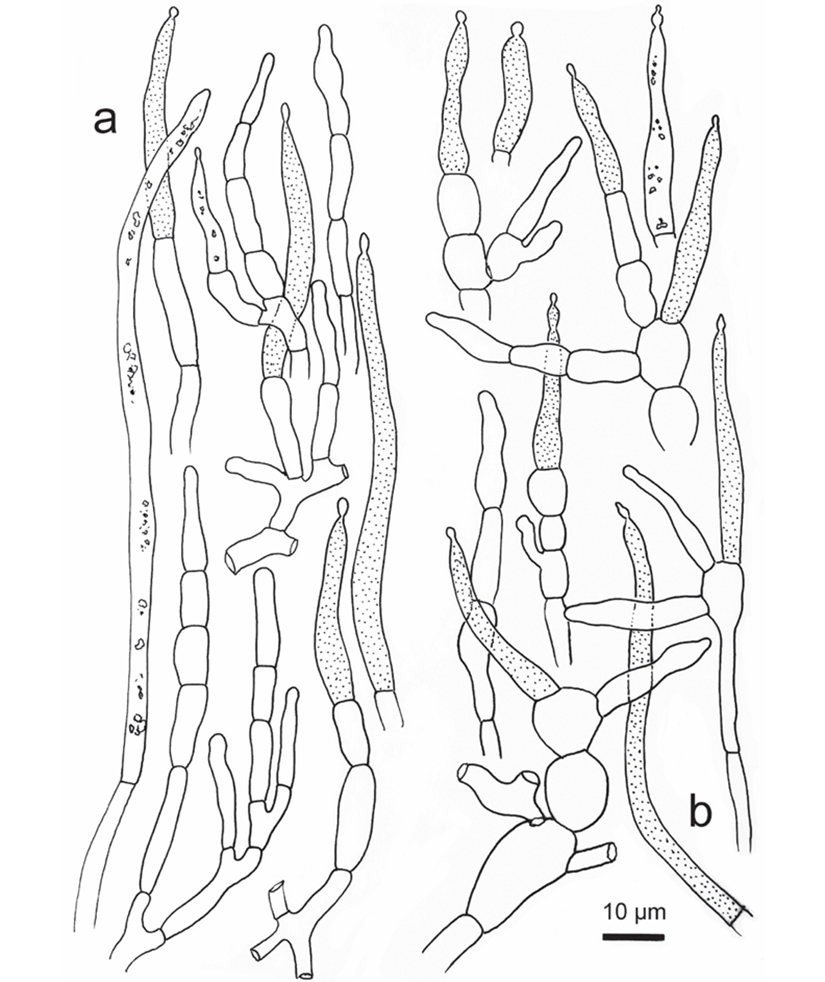
Figure 9. Russula subpectinatoides, holotype A hyphal extremities in pileipellis margin B hyphal extremi ties in pileus centre.


